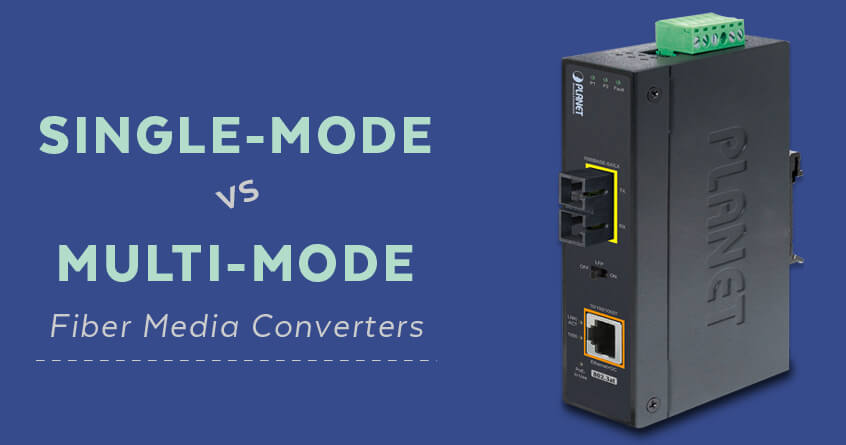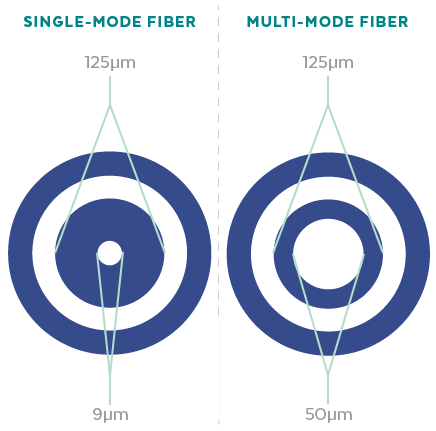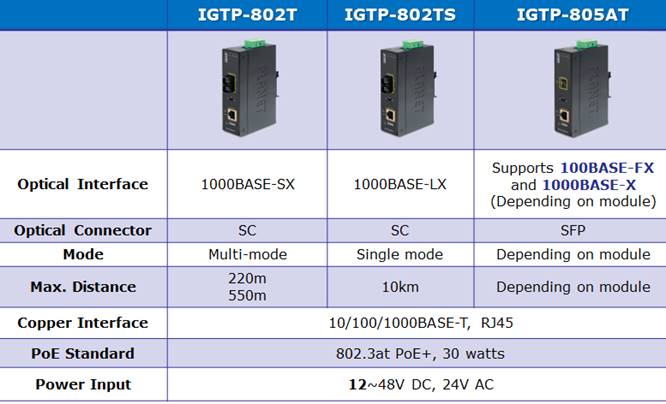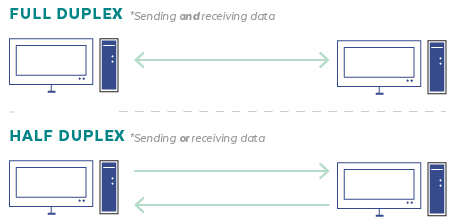The data center is a powerful example of the importance of fiber optic links and their vital role in transmitting data from an increasingly higher number of endpoints. Fiber and scalability go hand-in-hand. Bandwidth requirements of 10 Gbps and up to 40 Gbps and even 100 Gbps are becoming commonplace. Part of the attraction is the low latency, speed and distance available when fiber is introduced to a network configuration. And, it’s not just the data center where these kinds of results are happening. Business campuses, retail outlets, academic institutions and even the smart home are all places where fiber is proving a critical piece of the highly-functioning infrastructure. That’s precisely why fiber media converters are no longer just a special purchase for on-the-scene news events like the Olympics. A fiber media converter is now an essential connector, harnessing the speed of fiber and the low power, single-cable deployment of Ethernet.
How the Pros Deploy Fiber Media Converters
Fiber media converters are ideal for the long-distance deployment of IP surveillance camera systems in remote, low-traffic areas. IP surveillance cameras transmit high-resolution video data using Ethernet to a limit. Any deployments surpassing 100 meters require network installers to deploy fiber media converters at both the source and destination of the network link and achieve long-distance connections with high transmission rates.
Sending video over long distances isn’t the only capability that media converters facilitate. With the multi-camera setups like the type used in professional football where robotics are deployed to integrate images and provide 3D coverage, multi-mode converters provide higher-density transmission for networks while also allowing data to flow in two directions.
This post expands the explanation of how both single-mode and multi-mode fiber media converters work, so your team can take full advantage of their features.
Fiber Media Conversion | How Far vs. How Many
Most in-building network installers or system integrators utilize fiber media converters such as Ethernet extenders to surpass Ethernet’s 100-meter Ethernet limitation. Fiber media converters can achieve up to 55 meters using multi-mode fiber and up to 30 km using single-mode fiber.
Single-mode fiber is able to support longer distances due to its smaller core, which can measure between 8 to 10.5 microns (μm) and has a core to cladding ratio of 9μm to 125μm. Single-mode fiber, with its smaller core, can focus light pulses in a more direct pathway helping it achieve greater distances and faster speeds.
Multi-Mode fiber comes in different sizes and specific to network requirements. The standard core-cladding ratio of multi-mode fiber measures between 50 to 125 microns allowing emitted light pulses greater space to scatter.
Planet Technology’s Industrial Media Converters support both multimode and single-mode fiber to help build flexible deployments. The IGTP-802T is an Industrial 10/100/1000BASE-T 802.3at PoE Media Converter (SC, MM) at a distance of 550m. The multi-mode model supports SC fiber types and can achieve a distance of 220m and 550m. Additionally, the single-mode version of this media converter IGTP-802TS supports the same SC fiber type, but because it supports single-mode fiber, it can achieve 20x the distance of the multi-mode version for a total distance of up to 10km.
Half-Duplex SFP vs. Full Duplex SFP— What’s The Difference?
SFP fiber transceivers can support half-duplex SFP or full-duplex SFP, or in some cases, both. Duplex refers to the direction that data travels. Full duplex and half duplex are two different transmission methods in networking.
Full duplex is frequently compared to communication as occurs in a telephone and half duplex to communicating using a walkie talkie. Full duplex specifies the ability to perform the dual task of sending and receiving data. It can multitask and avoids collisions by maintaining separate frequencies for the data that it sends and the data that it receives.
Half duplex, on the other hand, has to switch between sending and receiving data. Half-duplex devices can be either sending data or receiving data, but they cannot do both.
These same models, the IGTP-802T and IGTP-802TS support both full-duplex and half-duplex speeds to remain compatible with your network. That gives you the flexibility to deploy on the spot as the demands of your network dictate and still be able to repurpose the same equipment in the future as the needs of your uses change.
Extended Operating Temperatures for Fiber Media Converters
In addition to being able to half or full-duplex data streams, our “hardened” units also offer extended operating temperatures of -40 to 75°C while our “Industrial” models offer operating temperatures of -10 to 60°C. This added toughness means you not only have the option to install them in extreme industrial environments, but you can also install them outdoors in many of the northern states and Canada where winters can get cold. Burying cable and fiber media converters can extend the range of climate significantly. Talk to your cable provider about which cables are out-door-rated and any recommendations they have for underground installation in your climate. Planet Technology’s fiber media converters are enclosed in a rugged encasement to support industrial rates that are also taking.
Fiber Media Converters & the Benefits of Adding Fiber
As 5G infrastructure continues to roll out and fiber installations creep closer to the building—pole-top, tower siting, dark fiber and lit fiber configurations—the role of fiber optic in ultra-high-speed bandwidth is becoming central.
Fiber media converters have a vital role to play in supporting wired and wireless technology. Wherever fiber and twisted-pair cabling appear in the same network stream, the results are that end-users enjoy low latency, speed, high-availability and the ability to span distance with speed.
Fiber “with Power over Ethernet, the challenges of data and power delivery are mitigated. Ethernet’s ability to carry both DC power and data communications directly to and from a device allows that device more freedom of location, as it no longer needs to be tethered to an AC power source,” states ICE Power & Tel.
End-users enjoy greater flexibility in where they can leverage each of these cable types and an optimal experience. Combining the best solutions where they are needed allows businesses and homeowners the ability to save money through single-cable Ethernet solutions and speedy fiber extensions to span the distance with fiber optic when required. The fiber media converter — both single-mode and multi-mode — is playing a considerable role in the smarter infrastructure design.
Schedule a call to learn more about single-mode and multi-mode fiber media converters, or obtain a quote.



